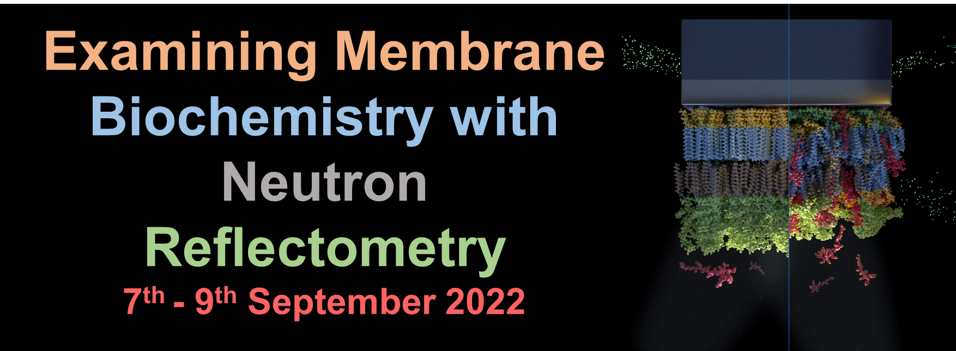Speaker
Description
Resolving structural and functional aspects of interactions between proteins and membranes requires experiments on membranes which mimic cellular characteristics as closely as possible. In this respect, previous methods which tethered or bound the membrane to a subjacent substrate showed significant deficiency. However, the so-called free-floating bilayer (FFB) model membrane system promises an important step forward. In this FFB system the membrane is surrounded on both sides by water and no longer in contact with the subjacent substrate. This results in better agreement with native membrane dynamics and fluidity. Nevertheless, the acting forces within this system are not fully understood. Ca2+ ions, essential for the self-assembling of the system, seem to play a crucial role. Also, the tightly bound water layers on top of a carboxylate terminated oligo (ethylene glycol) alkanthiol self-assembled monolayer (OEG-SAM), which covers here the substrate surface, are suggested to be a key element for generating FFBs. In this study, molecular dynamics simulations alongside with neutron reflectivity measurements were used to systematically investigate FFB systems consisting of differently charged phospholipid bilayers in presence of Ca2+ and Na+ ions, respectively. The results provided interesting insights in cation- and water-interactions with OEG-SAMs and phospholipid bilayers and enabled to understand the processes within the FFB system. The predicted model suggests that cations bind preferably to the OEG-SAM, hereby attracting the FFB. Nevertheless, structured water layers on top of the OEG-SAM maintain a water layer in between OEG-SAM and FFB via repulsive hydration forces. This knowledge is crucial to use the FFB system for the structural and functional analyses of the interactions between membrane proteins and lipid bilayers.

